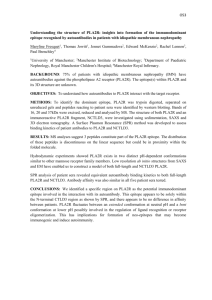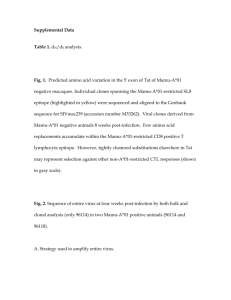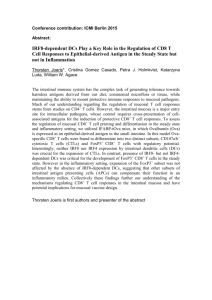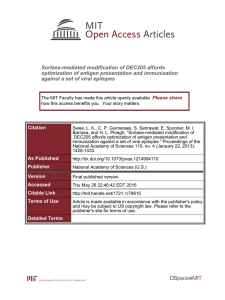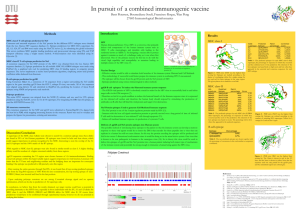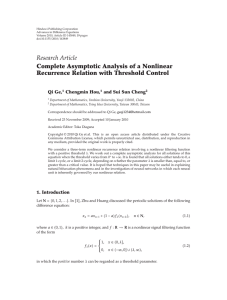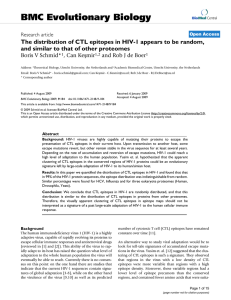Analysis of respiratory syncytial virus epitope specific CD8+ T cell
advertisement
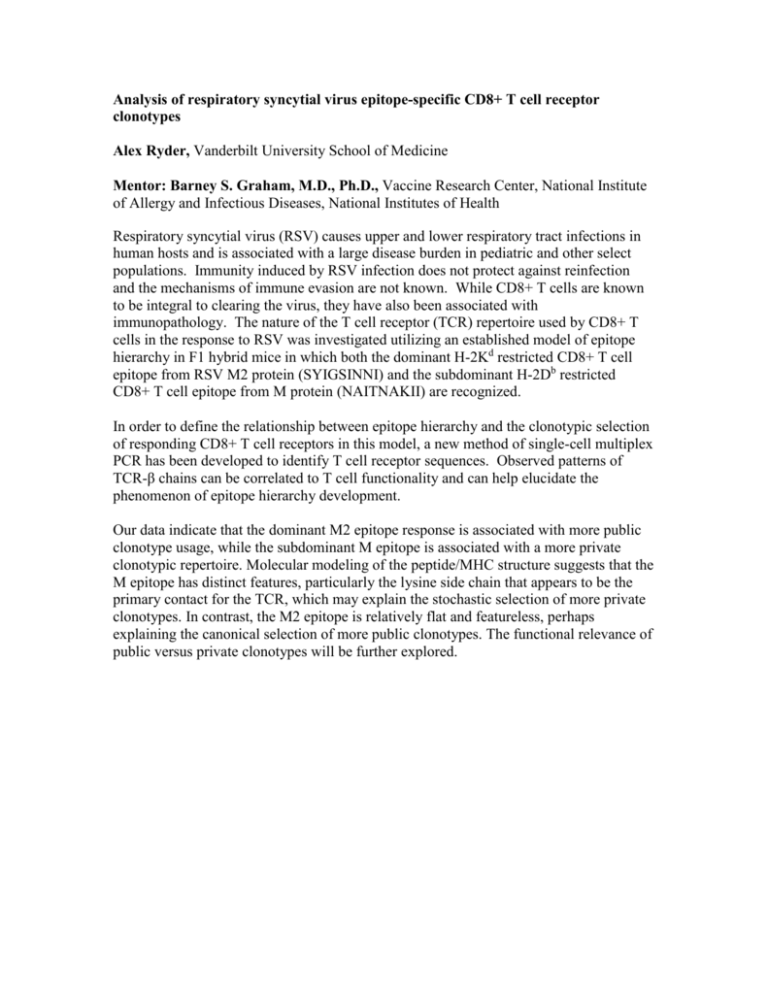
Analysis of respiratory syncytial virus epitope-specific CD8+ T cell receptor clonotypes Alex Ryder, Vanderbilt University School of Medicine Mentor: Barney S. Graham, M.D., Ph.D., Vaccine Research Center, National Institute of Allergy and Infectious Diseases, National Institutes of Health Respiratory syncytial virus (RSV) causes upper and lower respiratory tract infections in human hosts and is associated with a large disease burden in pediatric and other select populations. Immunity induced by RSV infection does not protect against reinfection and the mechanisms of immune evasion are not known. While CD8+ T cells are known to be integral to clearing the virus, they have also been associated with immunopathology. The nature of the T cell receptor (TCR) repertoire used by CD8+ T cells in the response to RSV was investigated utilizing an established model of epitope hierarchy in F1 hybrid mice in which both the dominant H-2Kd restricted CD8+ T cell epitope from RSV M2 protein (SYIGSINNI) and the subdominant H-2Db restricted CD8+ T cell epitope from M protein (NAITNAKII) are recognized. In order to define the relationship between epitope hierarchy and the clonotypic selection of responding CD8+ T cell receptors in this model, a new method of single-cell multiplex PCR has been developed to identify T cell receptor sequences. Observed patterns of TCR-β chains can be correlated to T cell functionality and can help elucidate the phenomenon of epitope hierarchy development. Our data indicate that the dominant M2 epitope response is associated with more public clonotype usage, while the subdominant M epitope is associated with a more private clonotypic repertoire. Molecular modeling of the peptide/MHC structure suggests that the M epitope has distinct features, particularly the lysine side chain that appears to be the primary contact for the TCR, which may explain the stochastic selection of more private clonotypes. In contrast, the M2 epitope is relatively flat and featureless, perhaps explaining the canonical selection of more public clonotypes. The functional relevance of public versus private clonotypes will be further explored.
